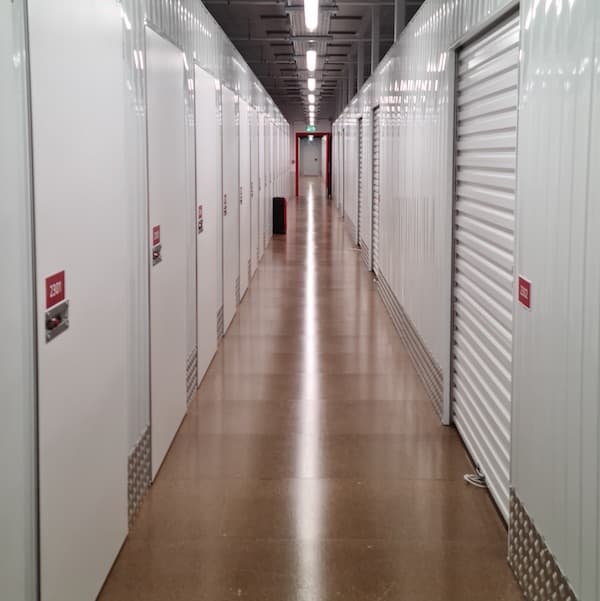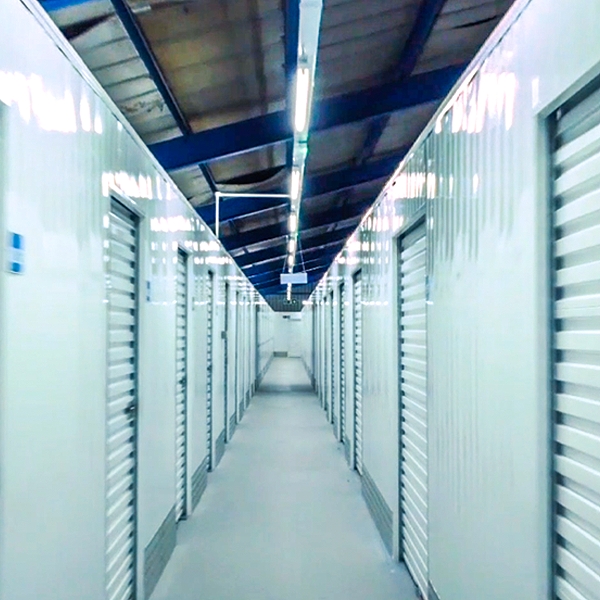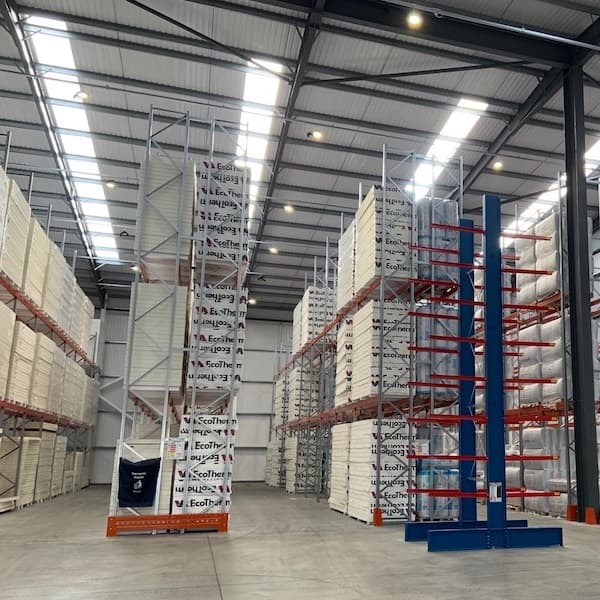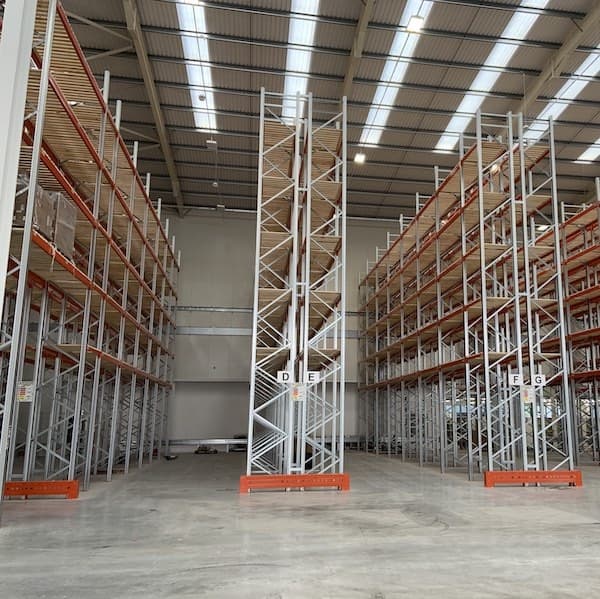- Mezzanine Floors
- Solutions
- Multi-Tier Mezzanines
- Mezzanine Pallet Safety Gates
- Mezzanine Staircases
- Mezzanine Handrails and Balustrades
- Mezzanine Decking
- Fire Protection for Mezzanine Floors
- Mezzanine Lift Shaft Design and Installation
- Resources
- Mezzanine Floor Calculator
- Mezzanine Floor Regulations and Building Control
- Self-Storage Mezzanine Floors
- Self-Storage Units
- Resources
- Self-Storage Site Selection Information
- Calculating The ROI of Self-Storage Conversions
- Planning for Automation in Self Storage
- Racking & Shelving
- Solutions
- Cantilever Racking
- Pallet Racking
- Coil Racking
- Longspan Shelving
- Tyre Racking
- Kimer Racking
- Live Storage Racking
- Drive In & Drive Through Racking
- Clip Shelving
- Mobile Shelving
- Custom Fabrications
- About Us
- USS Case Studies
- Self-Storage Fit-out For Raked Ceiling Building
- Mezzanine And Staircases For Entertainment Venue
- New Mezzanine And Staircases For Major Retailer
- Mezzanine Pallet Safety Gate
- Self-Storage Fit-Out Project For Brand New Facility
- Warehouse Racking, Wire Mesh & Shelving for New Warehouse
- Self-Storage Partition System & Components Installation
- Self-Storage Store Mezzanine And Staircases
- Multi-Tier Mezzanine For Logistics & Distribution Facility
- Warehouse Plant Platform
- Self-Storage Facility Space Expansion
- Mezzanine Floor For Distribution Warehouse
- Bespoke Feature Staircase & Mezzanine
- Single Level, Multi-Use Mezzanine
- Mezzanine For A New Building
- Mezzanine Floor For Plumbing Supplies Warehouse
- New Racking System and Mezzanine Floor
- Car Park Conversion To Self Storage Facility
- Pallet Racking and Cantilever Racking For Warehouse
- Two Mezzanine Floors For Self-Storage Facility In Birmingham
- Our Accreditations
- Contact Us
- USS Case Studies
- Perform a comprehensive risk assessment of the warehouse and put in place measures designed to severely reduce or remove any risks which have been identified
- Provide employees with information on any risks which are present and provide any training needed to deal with those risks
- Liaise and consult on questions of health and safety with employees or their representative
- Ensure that all equipment is maintained in safe working order, with a maintenance log kept
- Ensure that any employees using equipment are trained to do so
- Lifting operations must be properly planned in advance and must be supervised by a ‘competent person’, which means a properly trained employee
- The lifting equipment used in a warehouse must be inspected regularly to ensure that it is safe to use, and records of the regular examinations need to be maintained
- Ensure that the manual handling of hazardous waste is avoided wherever it is reasonably practicable to do so, using equipment such as goods lifts or cranes instead
- If manual handling can’t be avoided, the risk should be assessed
- Measures should be put in place to minimise the risk of any manual handling carried out
- Wherever possible, work at height should be avoided by taking steps such as using lifting equipment instead
- Where avoiding working at height is not possible, all steps should be taken to minimise the risk to the employees
- Measures should be put in place to minimise the potential distance of any fall from height and thus the risks involved
- Carry out a COSHH assessment to ascertain the risks presented by substances
- Work to find ways of preventing any exposure to hazardous substances at source
- If exposure can’t be avoided altogether, the risks need to be controlled as much as is reasonably practicable
- Slips and trips
- Manual handling
- Working at height
- The movement of vehicles in and around the warehouse
- Objects moving or falling
- The immediate reporting of any damage to the racking or defects which are spotted
- Visual inspections of the racking carried out on a regular basis
- Expert inspections carried out by trained employees at specific intervals
The Latest Blogs From USS
Warehouse Safety And Employee Satisfaction
read

In this article, we’ll examine the role warehouse safety plays in employee satisfaction, and creating a positive work environment for everyone.
We’ll focus on the legislation covering warehouse safety, and the role safety is likely to play in the recruitment and retention of warehouse employees. We’ll also examine the steps organisations can take to ensure that their premises are as safe as possible, including how the use of automation can help.
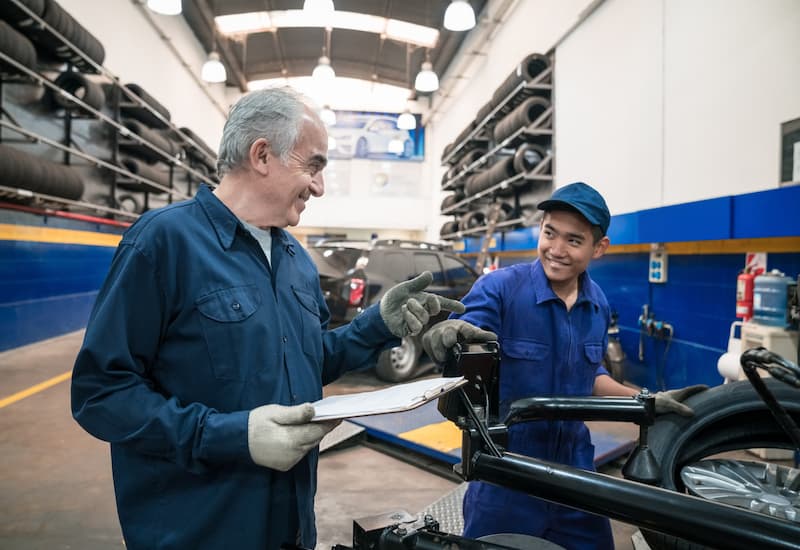
First Things First – Legislation
Given the varied nature of the safety risks present in the average warehouse environment, it probably comes as no surprise to discover that various regulations cover the health and safety legislation relating to warehouses. Depending on the specific operational procedures within a warehouse or, indeed, the goods stored and handled regularly, the regulations that apply will differ. Still, it will be covered by one or more of the following:
The Health and Safety Act
The Health and Safety Act at Work 1974 is the overarching legislation covering the responsibility of employers to take all reasonable practicable steps to look after their employees. The act itself is relatively complex, and for a clearer breakdown of the responsibilities of employers, you need to consult the Management of Health and Safety at Work Regulations 1999. Amongst the requirements placed on employers are the following:
In addition to the general responsibility for the health and safety of employees, anyone operating a warehouse will need to be aware of a range of regulations which apply specifically to the types of activities and environments likely to be present within an operative warehouse. These include the following:
The Provision and Use of Work Equipment Regulations 1998 (PUWER)
Under these regulations, the employer is responsible for ensuring that any work equipment in the warehouse is safe to use. This includes machinery, tools, installations and appliances that may pose a risk. The responsibilities set out in PUWER are as follows:
The Lifting Operations and Lifting Equipment Regulations 1998 (LOLER)
These regulations are in place to ensure that lifting equipment such as winches, lifts and cranes, any of which might be utilised in a warehouse environment, are all used safely.
The requirements of LOLER include the following:
The Manual Handling Operations Regulations 1992
These regulations are in place to ensure that any manual handling in a warehouse environment is done in a manner that protects the employees involved from injury. The requirements of the Manual Handling Regulations include the following:
The Work at Height Regulations 2005
The Work at Height Regulations cover the planning and practical delivery of any work at height. In almost every warehouse, employees will be working at height at some point – i.e. when picking stock or carrying out maintenance work – and when this happens, the following regulations need to be followed:
The Control of Substances Hazardous to Health Regulations 2002 (COSHH)
These regulations—known as COSHH—set out rules on the handling and storage of substances that are hazardous to health. These substances are distinct from a warehouse's regular waste products and could include gases, fumes, and chemicals. If the warehouse in question regularly stores the kind of substances covered by the regulations, then you need to be aware of your responsibilities as an employer.
These include the following:
Putting It All Into Practice – What To Look Out For
The technical details set out in the legislation detailed above are vital in terms of understanding exactly what your legal obligations to your warehouse employees are, but equally important in terms of creating a working environment that helps those employees to feel happy in their work is a firm understanding of that the practical risks of working in a warehouse are likely to be.

In simple terms, the leading causes of accidents in a warehouse environment can be broken down into the following categories:
Slips – Employees slipping generally happens when the floor is contaminated or wet, and in the average warehouse, the types of things likely to make a floor unsafe include oil, water, cleaning products, dry powders, and foodstuffs. Waste products from handling goods such as plastic bags and wrapping can also cause slips. The first step to minimise the risk is to ensure that the floor, when clean, is level and dry and that the surface of the floor is not so smooth that even a small amount of liquid will make it extremely slippery. The second is to ensure that equipment is maintained well enough to minimise the risk of incidents such as leaks and that the floor is always cleaned correctly.
Trips – Employee tripping is generally caused by objects on the warehouse floor or a poorly maintained floor surface. The floor surfaces inside and outside the warehouse should be checked to ensure they are even. Workflows around the warehouse should be planned to avoid areas where goods, equipment or waste products are likely to cause obstructions, and any items that fall onto areas that employees use should be noted through regular inspections and cleared as soon as possible.
Manual Handling—The risk of injury from manual handling in the warehouse includes neck and lower back pain. Wherever possible, manual handling tasks should be redesigned to use mechanical or automated devices such as conveyors, chutes, lifts, pallet trucks, and trolleys. Employees should also be trained in safe manual handling techniques and the correct use of mechanical or automated devices.
Working at Height—Besides the steps outlined in the regulations pertaining to working at height, employers should take the time to ensure that all employees can do so, offering training if needed. This is particularly relevant if specialist equipment such as a mobile elevating work platform (MEWP) is used. Any equipment used for working at height, such as ladders or stepladders, needs to be inspected regularly and again before each time it is put to use.
Moving Vehicle—The use of moving vehicles in a warehouse setting covers those vehicles delivering and collecting items from the warehouse and the vehicles—such as forklift trucks—moving around inside the warehouse. Deliveries need to be planned carefully in advance, with drivers given all relevant information ahead of time, including health and safety information. The possibility of visiting drivers having only a limited grasp of the English language should be factored into the information through the use of pictograms to illustrate site rules.
Within the workplace, traffic routes used by pedestrian employees and vehicles should be designed to keep the two separate, either through designing distinct routes or putting traffic control measures in place. In addition, traffic routes should be designed to minimise the need to reverse or contain reversing manoeuvres in an area not used by pedestrians. Routes should also avoid sharp bends and blind corners, as well as slopes, which might impact load stability.
Moving or Falling Objects – if there is an increased risk of objects falling in a particular part of the warehouse – i.e. where stock is regularly shifted to or from high shelving – then this area should be clearly marked with access limited to authorised employees. Handling equipment such as forklift trucks needs to be dealt with carefully. The trucks should be carefully maintained in line with the manufacturer’s instructions. Specific attention needs to be paid to parts of the truck involved in lifting, such as the forks, tilt mechanism, chains and mast. Employers should instigate a documented check before each shift, implement a system for reporting defects and ensuring they are corrected, and have a planned routine of regular maintenance. Employees operating the trucks need to undertake comprehensive training, which includes basic training, specific job training and familiarisation training.
Further steps to avoid falling objects include carefully planning storage areas. These areas should be officially designated and clearly marked and designed to avoid uneven surfaces, changes of gradient, tight corners, and awkwardly placed doors and pillars. Pallets should be inspected before each use, and those damaged must be repaired or disposed of.
The correct type of pallets should also be used for any pallet racking in the warehouse. The racking itself needs to be inspected and maintained regularly to ensure safety. The inspection regime within a warehouse should include the following:
Figures published by the Health and Safety Executive detailing work-related fatal injuries in 2023 stated that the most common accidents involved falls from a height, being struck by a moving/flying/falling object, and being hit by a moving vehicle. All these possibilities must be guarded against within any working warehouse environment.

All of this is important in and of itself, of course. Still, anyone operating a warehouse needs to be aware of the degree to which poor levels of safety and well-being – or even a perception of the same – can impact issues such as employee retention. There’s no escaping the degree to which employee retention has become an issue across the industry as a whole. According to figures from the ONS, the demand for warehouse staff had risen by 43.2% by the end of 2022 when compared to demand before the COVID-19 pandemic. Another survey in 2022, carried out by the Chartered Institute of Logistics and Transport (CILT), found that 86% of the companies surveyed had dealt with shortages in warehouse operatives in the two years prior.
Yes, A Judicious Application of Technology Reaps Positive Results
The answers to recruiting and retaining warehouse staff will involve steps such as increasing pay and opportunities for in-work advancement and applying basic safety steps we’ve discussed.
More than this, however, it seems clear that warehouse designs and layouts that incorporate the latest technology have a huge role in demonstrating to warehouse workers that they are valued and safe at work.
Of course, we’ve written previously about the drive for greater automation across the warehouse industry and how racking system design can help enable existing spaces to tap into that drive.
Recent research into the attitudes of warehouse workers appears to back up the feeling that introducing technology will help boost job satisfaction.
According to the survey by Zebra Technologies Corporation and Indeed, 62% of respondents stated that their employers are investing in technology to help them do their jobs, with 55% saying this is making their working life more manageable and 44% reporting increased job satisfaction. And possibly as a result of feeling a higher degree of job satisfaction, more than half of the respondents – 58% - see their warehouse jobs as being long-term.
This blog is for information purposes only and should not be construed as legal or financial advice and not intended to be substituted as legal or financial advice.
Find Us
S & L United Storage Systems Ltd
United House, The Street
Takeley, Bishop's Stortford
Hertfordshire, CM22 6QR
Company No. 1313816
VAT No. 291616253Say Hello
01279 871 787Copyright © 2025 S & L United Storage Systems Ltd. All rights reserved.
- About Us


